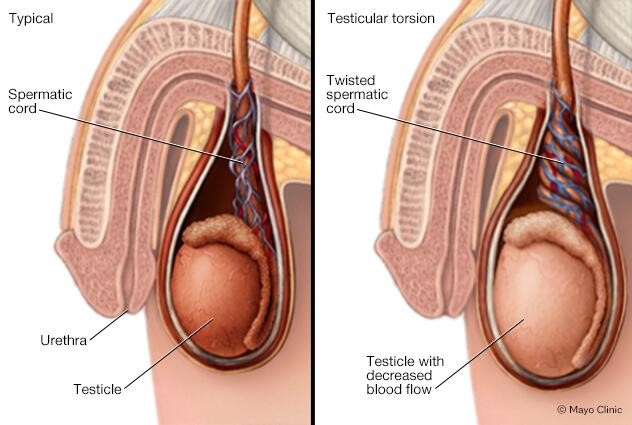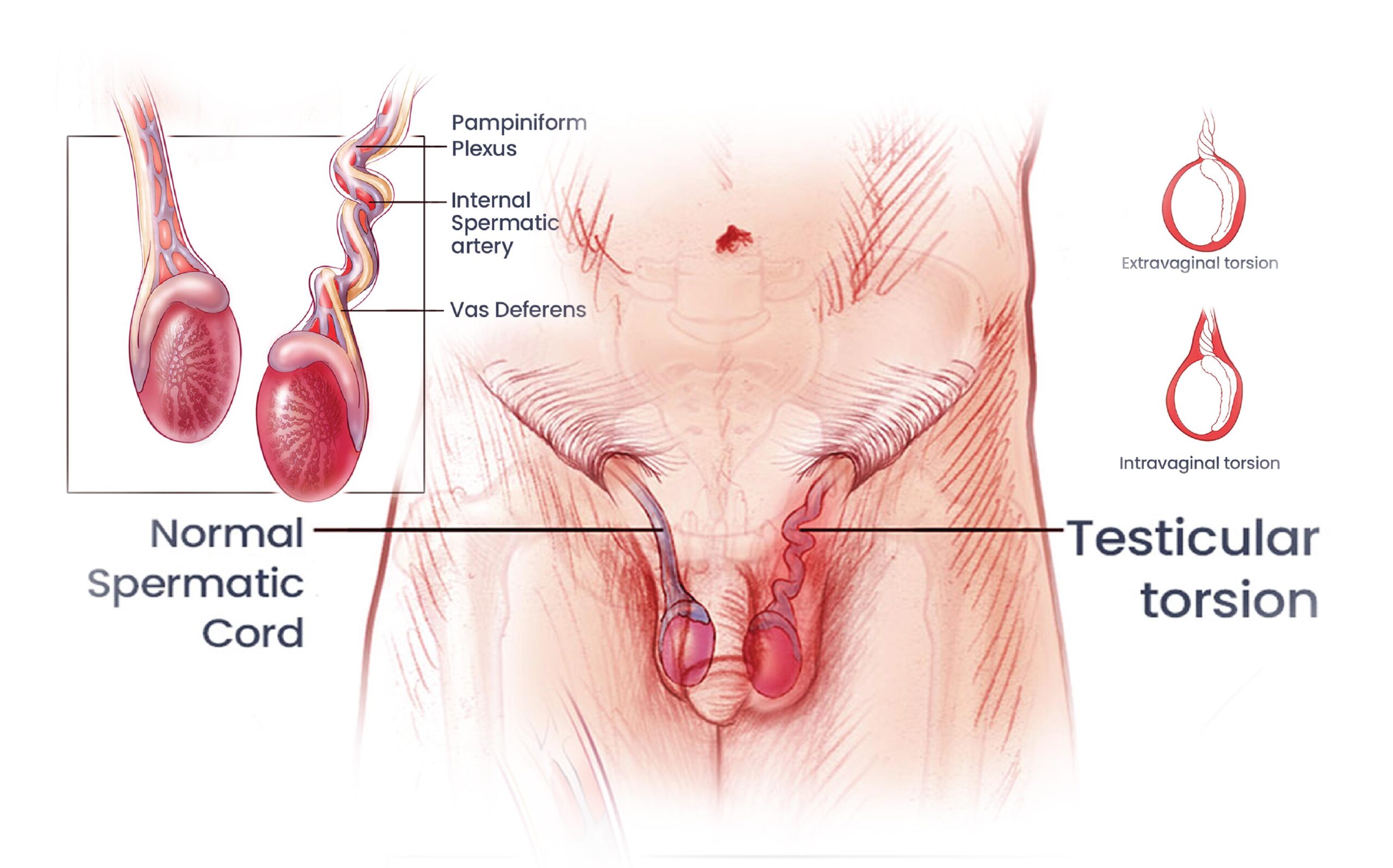Testicular Torsion
Testicular torsion occurs when a testicle rotates, twisting the spermatic cord that brings blood to the scrotum. The blood flow to it can be entirely blocked and cause damage. The patient with this condition will often have sudden, severe pain at scrotum resulting in swelling. Other symptoms are abdominal pain, nausea and the position of the testicle is higher than normal or at an unusual angle. The condition can occur at any age. When this situation happens, seek for medical advice from a surgeon immediately so that the testicle can be saved. If the blood flow has been cut off for too long, the testicle might become so badly damaged that it has to be removed.

Testicular Torsion Examination
Step 1: A medical officer will do a general clinical examination.
Step 2: Doppler ultrasound is done to measure the blood flow.
Step 3: If the blood flow is not found, emergency surgery needs to be done by a surgeon.
Step 4: Once the surgeon proceeds to operate, he/she will see the condition of the testis by looking at the colour. If it is totally black, the surgeon releases the torsion by unreleasing the twist and will monitor.
Step 5: If the testis does not regain the colour, the surgeon will have no alternative but to remove the testis.
By Dr Anantha Kumar Chinnaswamy, Consultant General Surgeon

